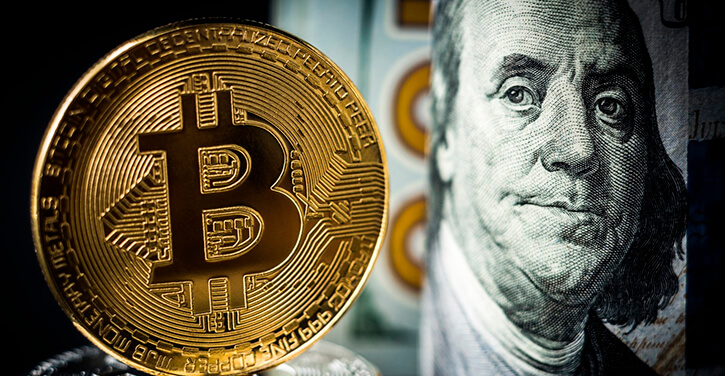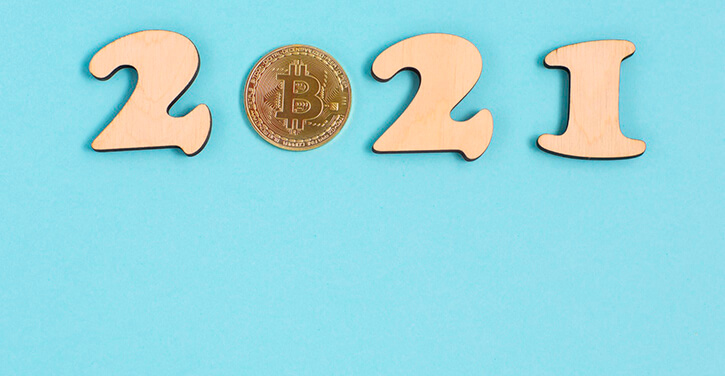
Cointext’s Industry Expert Panel discusses market forces on the crypto industry
If crypto ends up following in the footsteps of the dotcom boom, then in 20 years’ time, there will be a handful of players left standing from today’s crowded market after some sort of crash in the future.
If we take the broader view of economic modes, this seems like an eventuality. Second mover advantage – the notion that the businesses that follow the first to enter a market can build on the foundations of the first mover – could mean that Bitcoin could be supplanted by another currency, such as Ethereum or some other crypto asset that has yet to enter the market.
In addition, the 80:20 model; a rough rule of thumb for describing distributions, means that the top 20% of businesses in a sector collect 80% of the total revenue. With this in mind, the 4,000 currencies we see today will likely be down to around 800 significant ones (assuming we have already reached the peak) that will dominate 80% of the market.
So the question is, which of today’s cryptocurrencies will survive the storm and be heralded as the next Amazons of the world? And which ones will be consigned to history, like the ill-fated Pets.com.
Panelists

Anna Chertoc, Swapzone CEO
Anna Chertoc is currently leading Swapzone.io – a cryptocurrency exchange aggregator. She determines the company’s strategy and takes care of everything going around to make the best of it. Keen on the blockchain, cryptocurrency, and investing.

Lennart F. Clausen, Head of Trading at Skilling
Lennart F Clausen, co-founder and Head of Trading at the Skilling Group. 20+ years of experience in the FX markets, and still a developing and adaptive trader.

Jean-Yves, Founder of Deriv
Jean-Yves has been an entrepreneur since the age of 20. From 1997 to 1999, he developed the algorithms that would become one of the world’s first trading platforms. He was granted a patent for his binary options trading system in 2007, and granted two more patents in 2011 for systems and methods that enable financial market speculation.

Paul Sokolov, CEO at Guarda Wallet
Paul Sokolov is the Chief Executive Officer of Guarda Wallet with over 5 years experience in the field of blockchain technologies and cryptocurrency. Besides being the main visionary of Guarda, Paul is known for taking part in a variety of other blockchain-related projects overtime. Paul’s interests are focused on decentralization, custody-free cryptocurrency management and privacy solutions.

Pavel Matveev, CEO and co-founder of Wirex
Pavel Matveev is the CEO and co-founder of Wirex – an industry-leading blockchain-based payments platform that seamlessly integrates both traditional and cryptocurrencies. Pavel brings 15 years of experience in software development and IT management from his previous work at Barclays Capital, Morgan Stanley, BNP Paribas and Credit Suisse.
An overcrowded market
With as many as 1,700 cryptocurrencies already declared “dead” by November 2020, there are currently around 4,000 cryptocurrencies on the market. If we compare this to the dotcom boom of the late 1990s, there were once thousands of e-commerce companies that aimed to seize online dominance.
Today, three of the biggest players in the world emerged from the eventual crash: Google, Amazon and PayPal. The failures of the dot com bust may have helped businesses to redirect efforts towards creating online networks to bring people together, such as Facebook and Uber.
Crypto is likely to face a similar fate, with the winners and losers of the sector all racing towards their own inevitable fates.
Could crypto be said to be on the road to a Dotcom-style “boom and bust” thanks to new investors piling into crypto over the last year or so?

Anna Chertoc — Swapzone
“These two situations are really similar since cryptocurrency is now accessible for both businesses and individual investors. It is this accessibility and growth dynamics that make it possible to compare the two booms. As the number of crypto users increases every day, their confidence and trust in digital currency are growing.
The next stage, which we’re witnessing now, is the merger of the crypto market and traditional financial instruments. And as of now, we can say that crypto has become an integral part of everyday life not only for individual communities or crypto geeks but for anyone interested in finance and investments around the world.”
Lennart Clausen — Skilling
“There are obvious similarities, and maybe one of the most obvious is the “FOMO” (fear of missing out). But also, in particular amongst the institutional investors, I believe that they have realised over the last 12-24 months that the crypto-market and blockchain technology is here to stay, and that they need to be invested.”
Jean Yves — Deriv
“I don’t think the words “boom or bust” are relevant to what is happening. In my view, what we are witnessing is the transition from the legacy financial system (central banks, commercial banks, stock exchanges, stock brokers, Visa, Mastercard, SWIFT) to a new financial system.
It’s similar to the transition from horse and carriages to the motorised vehicles, or the transition from fax and telex communication to email. There will be ups and downs along the way, but the overall transition is a long-term trend.”
Paul Sokolov — Guarda
“Even though many compare crypto to the Dotcom boom, I do not think that they are so similar. Blockchain, in my opinion, is one of the most important breakthroughs in human history. And yes, if we think in the long run, probably not all projects will survive in 15-20 years but the most solid and secure ones will stay.
Despite the fact the dotcom boom was quite hectic and crazy, it did have a positive impact on the whole industry: huge investments in the infrastructure were made. Those afterward were used by the companies that emerged after the Dotcom boom, which was quite helpful for the industry growth.”
Pavel Matveev — Wirex
“As has been seen in the last few months during the bull run, changing regulations and Bitcoin’s long and positive performance track means that there are a huge number of institutional investors getting involved as they look to diversify their portfolios, which has helped both BTC and ETH to reach new all time highs in the last month. Nevertheless, crypto, and namely BTC and ETH have historically been hugely volatile, with their highs followed by considerable lows.
Increasing adoption rates have also led to a large number of crypto-related companies emerging, for which there will also be winners and losers.
At Wirex, we have positioned ourselves well in the market to ensure that we will remain a leading player in the digital payments space, and have scaled quickly but sustainably to maintain this growth. We were born out of a belief that the digital economy is the future of finance, and created a service that helps users to utilise crypto in day-to-day life.”
A New World Order?
The US dollar has been the world reserve currency for around six decades, history, however, shows us that all things must eventually pass. My theory is that the US would prefer Bitcoin (or another digital asset) to become the world reserve currency rather than handing this crown to another nation, such as China.
If we take a broad view of history, we can find a few watershed moments where technology fundamentally changed human society. One of these is the printing press which massively expanded literacy and the sharing of knowledge and weakened the power of the Church (for better or worse) while another much later invention is the networking effects of the internet, that we can all agree has created a paradigm shift in how we live our lives.
Do you believe that Bitcoin could one day replace the US dollar as the world’s reserve currency?

Anna Chertoc — Swapzone
“One day it could become our reality but I’m afraid that even with our pace of life we still have a long way to go. The dollar has been a stable currency that meets gold standards for over a century now. How long will it take for cryptocurrency to replace it is an open-ended question. However, what we can say for sure is that crypto is bound to become one of the top assets in the nearest future.”
Lennart Clausen — Skilling
“No. I cannot imagine a world where governments and central banks completely forfeit their control over monetary policy, especially the Federal Reserve. Actually, in the 1-5 year horizon I think it’s a greater chance that some of these institutions would at least try to do the opposite by regulating (and in some cases banning) the development and use of cryptocurrencies.
However, what I do believe is that there’s a chance that state-controlled digital currencies (i.e China’s DCEP) can, and probably will, become an alternative to US dollars as reserve currency.
If I’m wrong, then my “best case” scenario for Bitcoin is that it can become a “digital gold” that central banks may use to back their fiat currencies.”
Jean Yves — Deriv
“Yes – I believe that the legacy financial system is too inefficient, expensive, cumbersome and unadapted to the modern economy. Cryptocurrencies will gradually take over.”
Paul Sokolov — Guarda
“Bitcoin is indeed one of its kind, but when it comes to the world economy, I don’t think we can ignore the importance of a stable fiat currency. Not only for the payment operations. One of the most important functions of money is the regulation of the economy and Bitcoin is still quite far from being able to control the world economy.
Bitcoin is called digital gold for a lot of reasons. However, you wouldn’t pay with gold due to high transaction costs, right? There is a long way for Bitcoin to go to become the world reserve agent:; for that to happen it has to gain liquidity and a larger amount of professional counterparties – secure custodies, for example.
When it comes to one of the most important functions of money — being a medium of exchange and facilitating transactions — Bitcoin could definitely replace USD. However, with the price fluctuations we observe at the moment, that is also unlikely.”
Pavel Matveev — Wirex
“Crypto adoption has been growing at an extraordinary rate in the past decade, and is on course to reach over 63 million users by the end of 2020.
However, one of the main areas of scepticism around Bitcoin and other cryptocurrencies is its lack of regulation by governmental bodies, given its decentralised nature. This, combined with its volatility, means that some countries and governments may be opposed to this.
In fact, there have been some countries, such as Nigeria and India, that have tried to limit the use of cryptocurrencies, with many still having a very conservative outlook when it comes to Bitcoin, simply because of its perception as something that only tech-savvy people use.
Nevertheless, there are huge advantages to crypto payments and governments would be silly to ignore the potential of low transaction costs and to be part of an interconnected world economy. Therefore, rather than Bitcoin, it’s more likely that stablecoins will emerge to replace the US dollar as the world’s reserve currency, and government bodies will endeavour to develop these under their control to maintain their position as a global financial power.”
Do you think Bitcoin and blockchain will radically change finance, businesses and our lifestyles?
Bitcoin has a fundamental advantage over every other cryptocurrency — it was the first out of the gate. However, in the game of innovation, the second mouse tends to get the cheese.
Facebook was not the first social network but is the dominant player today — this is no accident. It achieved this by learning from the attempts of its predecessors, such as MySpace, by creating a social network that was accessible to a larger number of people, i.e not internet nerds, it swallowed up practically the whole market.
Anna Chertoc — Swapzone
“Absolutely. Moreover, it’s already happening right now and we’re witnessing the revolution of the financial industry in the online mode. Blockchain is no longer just mainstream – it’s a part of our life, whether we like it or not. And what we’re seeing now is just the beginning. Introducing such technologies and finding ways to practically implement them is a rather lengthy and gradual process.
Our mission is to speed up and simplify the integration of the financial instruments supporting cryptocurrencies into our life. It’s in our best interest to provide high-quality services so that the adaptation process goes faster with cryptocurrency becoming as reliable as traditional financial instruments.”
Jean Yves — Deriv
“Yes, cryptocurrencies will change the financial system. Who wants to ride a horse when a car is available, or use a fax when email is available?”
Paul Sokolov — Guarda
“In my opinion, they already have. With the emergence of the blockchain concept, the whole system of information storage and management has changed, eliminating the need for intermediaries and cutting down costs. The financial system has also changed a lot, when it comes to financial services (but not financial regulation).
Currently, it is possible to send, receive, store, buy, sell, exchange cryptocurrency and earn rewards within a trustless system that does not need any third parties to perform an action, where everything is regulated by smart contracts. Who could imagine that there would be digital money that not only can be used to buy goods and services but also to take part in the life of a blockchain?”
Pavel Matveev — Wirex
“Many people are already beginning to recognise the benefits that cryptocurrencies have compared to traditional payments, so public attitudes are definitely beginning to shift. Decentralised finance has a range of advantages that offer a huge range of use cases in everyday life and processes.
One of the main areas where Bitcoin and other cryptocurrencies are thriving is overseas payments and transactions. While traditional banks may have the resources to perform this task, they lack the speed. Often born from several acquisitions and burdened by multiple regulatory obligations, they simply cannot meet the need to simplify processes and reduce costs with their infrastructure, with half of banks admitting to have struggled with this issue. While the profit opportunity is there, cross-border payments will only ever be a small part of most big banks’ balance sheets. The value for smaller, mono-focus fintechs are significant enough to make the segment attractive, meaning that more cryptocurrency options will evolve for this purpose. It may come to a point where making overseas transactions in crypto becomes the norm, simply because it’s faster and cheaper.”
The market today
Now, moving back to the present and there’s been the ever-present flurry of speculation for where Bitcoin and the crypto market is heading next. While we’re here, we decided to ask our panelists what potential they saw in the blooming bull run of late.
With new all time highs being broken everyday, how long do you believe this bull market will run for?
Anna Chertoc — Swapzone
“The crypto market is now rather volatile, with speculators turning up en masse, causing prices to move and wanting to cash-in on it. However, despite this here and now narrative, we believe that the prices will continue to soar as digital assets proliferate globally.”
Lennart Clausen — Skilling
“The funny and scary part of such crazy moves is that nobody knows how long and far it will run for, and my guess is just as good or bad as anyone’s. But I believe a correction/crash will occur already this year, maybe in the second half, when our lives hopefully get back to something close to normality.”
Jean Yves — Deriv
“The bull market will keep running until I can buy a Starbucks or book a Uber using cryptocurrencies. Then it’ll have hit mainstream, and it will be time to sell.”
Paul Sokolov — Guarda
“I am in no place to give any sorts of predictions, to be honest. Let’s see how it is going to play out at the end and hope for more ATH records. I do believe that crypto adoption is much more important than price changes, even though they reflect the assets’ popularity and adoption.”
Pavel Matveev — Wirex
“In the medium-to-long term, I am bullish for BTC and ETH. Over the past few months, we’ve frequently seen new all-time-highs, but these have frequently been followed by consolidations and corrections, showing crypto’s volatility. Nevertheless, this is not unlike what we saw in the 2017 bull run.
Therefore, I don’t believe that the rally is over, and with a huge number of institutional investors flocking to diversify their portfolios and invest in crypto, as well as increased awareness amongst a mainstream audience creating a sense of FOMO, it’s likely this momentum will only continue, and we may well be on our way to a BTC price of $100k.”
What is your Q2 target for Bitcoin’s price in 2021?

Anna Chertoc — Swapzone
“The cryptocurrency market is a fast-growing industry and has been witnessing tremendous growth over the last couple of years. In 2010, you could buy two pizzas for 10,000 BTC, and now, in 2021, for 3-5 BTC, you can buy a Tesla. Despite its high volatility, Bitcoin will probably continue climbing and might be worth $150,000 or $500,000 — you never know, and there’s beauty in the world of the unknown.”
Lennart Clausen — Skilling
“I’m sticking my head out here and guessing 25k (but maybe we need to add another 0 to that 🙂 ) by the end of June, after a much higher top before that. Please do not treat this as investment advice!”
Jean Yves — Deriv
“$100,000.”
Paul Sokolov — Guarda
“I believe it’s more important to think about how many people use Bitcoin and altcoins in their everyday life. That is the only thing that matters to our team.”
Pavel Matveev — Wirex
“I believe there will be consolidation of the market, after a correction. The price will likely slide below $40k, potentially close to $38k before a rebound at the end of Q2. We have nice events unfolding this year, and many are expecting other big tech companies to get involved, maybe as treasury holders, but mostly in the context of rational business plans. The price of Bitcoin went too high too fast and the February rally was mostly fueled on leverage. I’ll be cautious and say that the target for Q2 would be reaching back slightly above $60k. But again, patience is key here, and it depends on so many factors. It is a price discovery process.”

